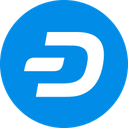-
 bitcoin
bitcoin $114320.977035 USD
-0.40% -
 ethereum
ethereum $4152.439985 USD
-1.75% -
 tether
tether $1.000111 USD
-0.04% -
 xrp
xrp $2.843037 USD
-1.63% -
 bnb
bnb $1013.349380 USD
-1.62% -
 solana
solana $208.362767 USD
-2.10% -
 usd-coin
usd-coin $0.999783 USD
0.00% -
 dogecoin
dogecoin $0.232559 USD
-1.00% -
 tron
tron $0.333491 USD
-1.09% -
 cardano
cardano $0.806310 USD
0.19% -
 hyperliquid
hyperliquid $45.023720 USD
-1.59% -
 ethena-usde
ethena-usde $1.000819 USD
-0.06% -
 chainlink
chainlink $21.241249 USD
-2.11% -
 avalanche
avalanche $30.035416 USD
-0.66% -
 stellar
stellar $0.364984 USD
-2.05%
What is DeFi's asset management platform?
DeFi asset management platforms provide decentralized control, yield optimization, and asset management strategies tailored to investors' crypto-assets and earning objectives.
Feb 18, 2025 at 07:43 am
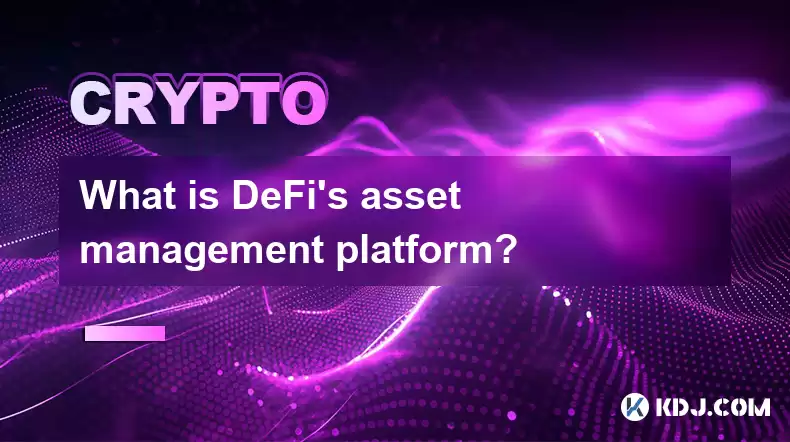
- DeFi's asset management platforms offer innovative ways to manage digital assets.
- These platforms enable decentralized control, transparency, and yield optimization.
- Platforms vary based on features, fees, and supported assets.
DeFi's asset management platforms are decentralized applications (dApps) that provide users with a comprehensive suite of tools to manage their digital assets. These platforms leverage the power of blockchain technology to offer unique features such as decentralized control, transparency, and yield optimization. By utilizing DeFi asset management platforms, investors can gain access to a wide range of crypto-assets, earning opportunities, and asset management strategies.
How DeFi's Asset Management Platforms Work:- Non-Custodial: DeFi asset management platforms generally operate on a non-custodial basis, meaning that users maintain complete control over their assets at all times. This eliminates the risk of third-party custodians mismanaging or losing user funds.
- Automated Strategies: These platforms often feature automated investment strategies that employ algorithms to allocate assets and optimize returns based on predefined parameters. This automation allows users to manage their investments passively and potentially maximize their earnings.
- Yield Aggregation: DeFi asset management platforms often offer yield aggregation services, enabling users to access multiple sources of yield from the broader DeFi ecosystem. By aggregating liquidity from various pools and lending protocols, these platforms provide users with the opportunity to optimize their returns and minimize risk.
- Enhanced Control: DeFi asset management platforms grant users complete control over their assets, eliminating the concerns associated with centralized custodians.
- Transparency: All transactions and activities within DeFi asset management platforms are recorded on the blockchain, ensuring transparency and accountability.
- Yield Optimization: Automated strategies and yield aggregation services provided by these platforms assist users in maximizing their returns through efficient asset management.
The choice of a DeFi asset management platform depends on several factors:
- Supported Assets: Different platforms may support a varying range of crypto-assets, so it's crucial to choose a platform that supports the assets of interest.
- Fees: DeFi asset management platforms typically charge fees for their services, including management fees and performance fees. Comparing these fees is essential to avoid excessive costs.
- Features: Platforms offer a range of features, such as automated strategies, yield aggregation, staking, and borrowing. Selecting a platform with features aligned with investment objectives is important.
- Aave: A leading decentralized lending and borrowing protocol that offers yield aggregation and lending opportunities.
- Compound: Another decentralized lending and borrowing protocol that empowers users to earn interest on their crypto-assets.
- Curve Finance: An automated market maker (AMM) specializing in stablecoin trading and yield optimization.
- Yearn Finance: A yield optimizer that utilizes automated strategies to maximize returns on crypto-assets.
- MakerDAO: The protocol behind DAI stablecoin that offers collateralized lending and decentralized asset management.
- Q: What is the difference between a DeFi asset management platform and a traditional asset management platform? A: DeFi asset management platforms operate on the blockchain, providing decentralized control, transparency, and yield optimization features.
- Q: How do I get started with a DeFi asset management platform? A: Connect your cryptocurrency wallet to the platform, deposit funds, and explore available investment strategies.
- Q: Are DeFi asset management platforms safe? A: While DeFi asset management platforms offer enhanced security through blockchain technology, understanding the underlying risks and choosing reputable platforms is crucial.
- Q: What are the risks of using DeFi asset management platforms? A: Some risks include potential technical vulnerabilities, market volatility, and the availability and reliability of underlying protocols.
- Q: How do I choose the right DeFi asset management platform for me? A: Consider factors such as supported assets, fees, features, and your investment objectives when selecting a platform.
Disclaimer:info@kdj.com
The information provided is not trading advice. kdj.com does not assume any responsibility for any investments made based on the information provided in this article. Cryptocurrencies are highly volatile and it is highly recommended that you invest with caution after thorough research!
If you believe that the content used on this website infringes your copyright, please contact us immediately (info@kdj.com) and we will delete it promptly.
- BlockDAG, DOGE, HYPE Sponsorship: Crypto Trends Shaping 2025
- 2025-10-01 00:25:13
- Deutsche Börse and Circle: A StableCoin Adoption Powerhouse in Europe
- 2025-10-01 00:25:13
- BlockDAG's Presale Buzz: Is It the Crypto to Watch in October 2025?
- 2025-10-01 00:30:13
- Bitcoin, Crypto, and IQ: When Genius Meets Digital Gold?
- 2025-10-01 00:30:13
- Stablecoins, American Innovation, and Wallet Tokens: The Next Frontier
- 2025-10-01 00:35:12
- NBU, Coins, and Crypto in Ukraine: A New Yorker's Take
- 2025-10-01 00:45:14
Related knowledge

How to track DeFi activity on a block explorer
Sep 04,2025 at 05:36pm
Bitcoin's Role in Decentralized Finance1. Bitcoin remains the cornerstone of the cryptocurrency ecosystem, serving as both a store of value and a benc...
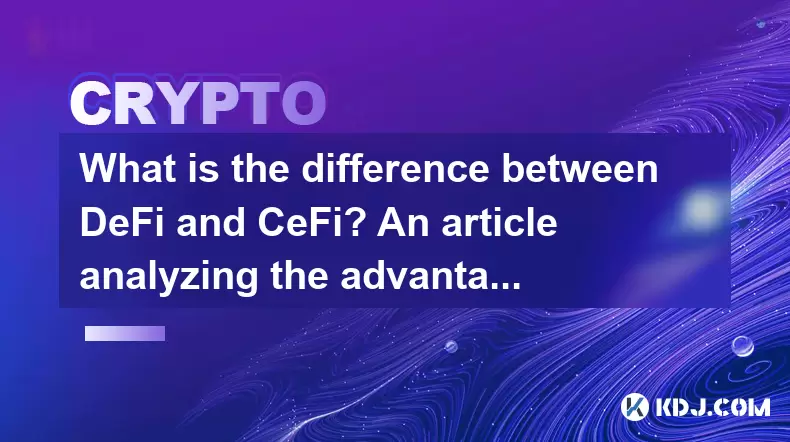
What is the difference between DeFi and CeFi? An article analyzing the advantages and disadvantages of both
Jun 13,2025 at 03:57am
Understanding the Foundations of DeFi and CeFiTo fully grasp the difference between DeFi (Decentralized Finance) and CeFi (Centralized Finance), it’s ...
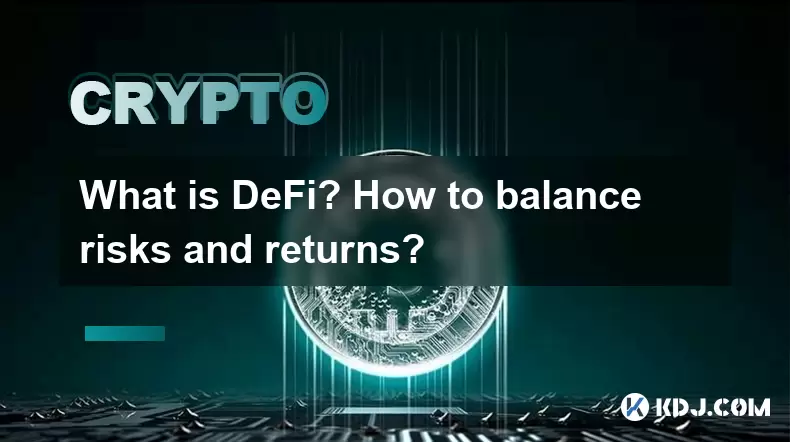
What is DeFi? How to balance risks and returns?
May 31,2025 at 12:22pm
What is DeFi? How to Balance Risks and Returns? Decentralized Finance, commonly known as DeFi, represents a revolutionary shift in the financial ecosy...
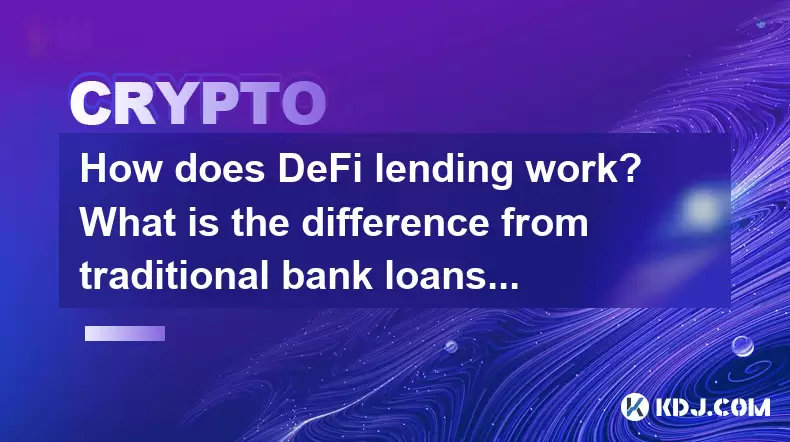
How does DeFi lending work? What is the difference from traditional bank loans?
May 29,2025 at 05:36pm
Introduction to DeFi LendingDeFi lending, or decentralized finance lending, represents a revolutionary shift in the way borrowing and lending are cond...
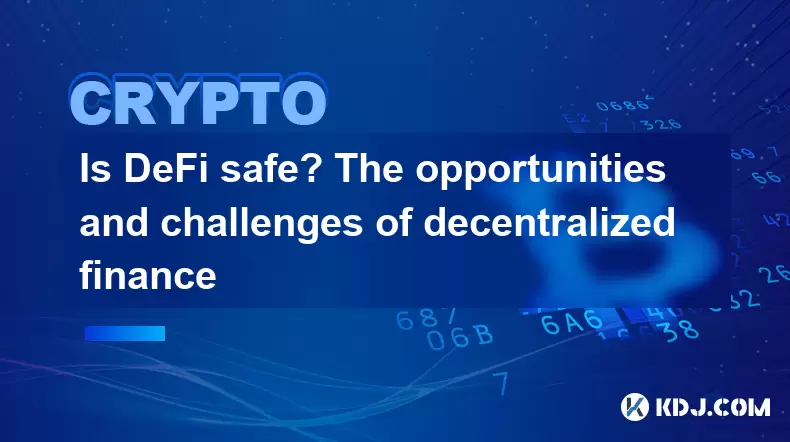
Is DeFi safe? The opportunities and challenges of decentralized finance
May 27,2025 at 02:28pm
Decentralized Finance, commonly known as DeFi, has revolutionized the financial landscape by offering a range of financial services without the need f...
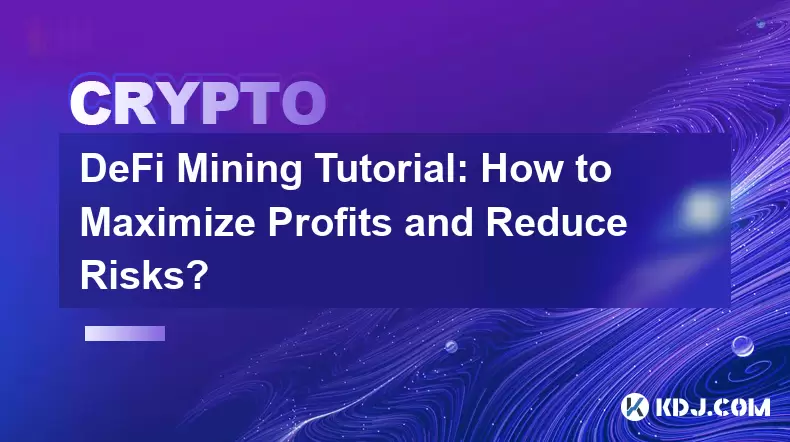
DeFi Mining Tutorial: How to Maximize Profits and Reduce Risks?
May 27,2025 at 07:42am
DeFi, or Decentralized Finance, has opened up a new world of opportunities for crypto enthusiasts looking to maximize their profits through various mi...

How to track DeFi activity on a block explorer
Sep 04,2025 at 05:36pm
Bitcoin's Role in Decentralized Finance1. Bitcoin remains the cornerstone of the cryptocurrency ecosystem, serving as both a store of value and a benc...

What is the difference between DeFi and CeFi? An article analyzing the advantages and disadvantages of both
Jun 13,2025 at 03:57am
Understanding the Foundations of DeFi and CeFiTo fully grasp the difference between DeFi (Decentralized Finance) and CeFi (Centralized Finance), it’s ...

What is DeFi? How to balance risks and returns?
May 31,2025 at 12:22pm
What is DeFi? How to Balance Risks and Returns? Decentralized Finance, commonly known as DeFi, represents a revolutionary shift in the financial ecosy...

How does DeFi lending work? What is the difference from traditional bank loans?
May 29,2025 at 05:36pm
Introduction to DeFi LendingDeFi lending, or decentralized finance lending, represents a revolutionary shift in the way borrowing and lending are cond...

Is DeFi safe? The opportunities and challenges of decentralized finance
May 27,2025 at 02:28pm
Decentralized Finance, commonly known as DeFi, has revolutionized the financial landscape by offering a range of financial services without the need f...

DeFi Mining Tutorial: How to Maximize Profits and Reduce Risks?
May 27,2025 at 07:42am
DeFi, or Decentralized Finance, has opened up a new world of opportunities for crypto enthusiasts looking to maximize their profits through various mi...
See all articles






































































